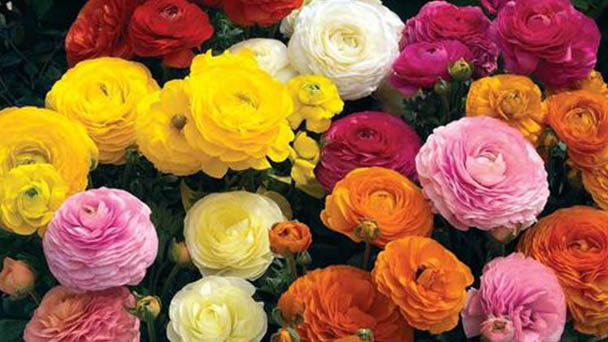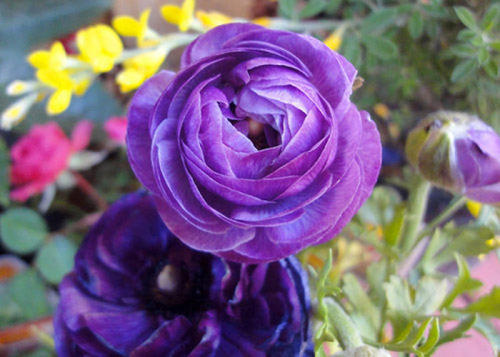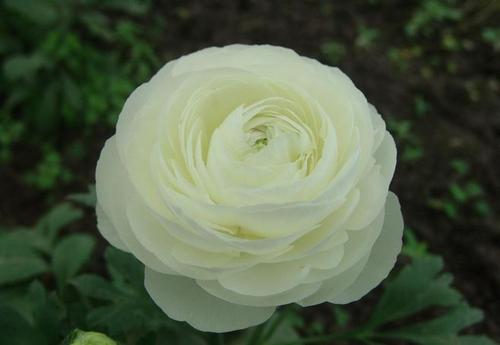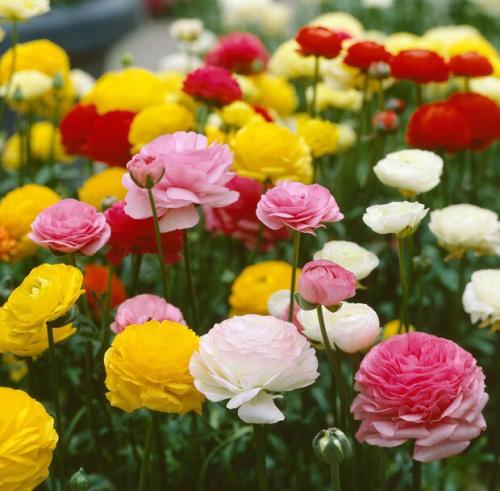Persian Buttercup Profile
Written by Maggie
Nov 03 2021

Persian Buttercup is a perennial herb in the Persian Buttercup family. Persian Buttercup is native to the Mediterranean coast and is widely grown in France, Israel and other European countries, though only in the Persian Gulf. Since the late 1990s, China has introduced and cultivated cut flower varieties, which are more suitable for cultivation in winter and spring. The flowers are colorful and rich, with five to dozens of petals, the diameter of flowers being 6 ~ 9cm, red, white, orange and other colors, and having one or double petals. Favored by consumers, planting area is increasing year by year.

Persian Buttercup Morphology
In the Persian Buttercup, there are long, rich, colorful herbs in the Persian Buttercup.
Branches: 20 cm ~ 40 cm, tuberous roots fusiform, a constant cluster in the root neck.
Stem: The stem is solitary, or sparsely branched, hairy; Basal leaves are broadly ovate, with long stalks, cauline leaves sessile.
Flowers: single flowering shoots, or from the axils of very long pedicels, corolla full round, petals spread, 8 per round, scattered overlapping, flower diameter of 3 cm to 4 cm or more, a constant cluster in the root neck. Flowers are double, semi double, colorful, white, yellow, red, water red, red, orange, purple and brown and other colors.
Persian Buttercup Growth Patterns
The persian buttercup is native to western Asia and southeast Europe with Turkey as the center. It likes mild climate, fresh and moist air, and a shady growing environment. It is not resistant to cold and freezing, but also afraid of hot and hot sun.In most parts of China it goes dormant in the summer. Potted plants are required to be rich in humus, loose, fertile and permeable sandy culture soil.
Persian Buttercup Distribution
Persian Buttercup is native to Southwest Asia and southeast Europe (Mediterranean coast) with Turkey as the center, and is widely grown in France, Israel and other European countries throughout the world.

Persian Buttercup Propagation
Suitable temperature for germination: 10-15
Suitable temperature for growth: 10-15
Sowing time: Autumn
Flowering: Winter and spring
Cultivation method: choose loose and well-drained acidic soil as bed, or plant directly in the indoor basin. Sowing should be carried out in autumn. When the seed temperature is too high, it will germinate slowly, and germinate in 20 days at 10 degrees.
Reproduction of the Persian Buttercup is typically performed in balling (9-10), where tubers are separated from roots in the Persian Gulf.
Persian Buttercup Use
Persian Buttercup plant shape is low, the color is gorgeous, the flower stem is erect, the flower shape is graceful and unique; The flowers are large, beautiful and good-looking; Petals are compact, multiple overlapping; The colors are rich and bright. It is an ideal flower for potted appreciation, open-air flower bed and flower-border arrangement, lawn ornament and fresh cut flower production in spring. It is an excellent beautification material under shade environment, so it is suitable for planting under trees or the north side of buildings, and is deeply welcomed by consumers.
Persian Buttercup is a newly emerging flower in the Persian Gulf that has significant economic benefits and rapid development in the country, but is far from enough to meet the market demand and has broad development prospects.

Read Next:
Persian Buttercup (Ranunculus Flower) Grow & Care Guide
Latest Updated
- Benefits of Bugleweed - 7 Science-backed Health Benefits
- Bugleweed Dangers & Side Effects - Is It Poisonous?
- How to Plant Evergreen Trees - What You Should Know
- When to Plant Evergreens - Grow Guide for Evergreen Trees
- 12 Wonderful Evergreen Shrubs for Your Garden
- 12 Popular Evergreen Plants with Pictures for Beginners
- When And How To Prune A Lilac Bush Like a Pro
- How to Grow & Care for Lilac Vine (Hardenbergia Violacea)
- Japanese Lilac Tree (Syringa Reticulata) Care & Propagation Guide
- Shumard Oak Pros and Cons - What to Know
Popular Articles
- Winter maintenance of Antirrhinum Majus
- How to Grow Terminalia Mantaly Tree
- How to Grow and Care for Crossostephium Chinense
- How to grow Antirrhinum Majus in spring
- Peristeria Elata (Dove Orchid) Profile: Info & Care Guide
- Underwatered Snake Plant (Sansevieria Trifasciata) - Signs And How To Fix
- How to Care for Brazilian Jasmine Plant (Mandevilla Sanderi)
- How to Grow & Care for Graptopetalum Purple Delight in Summer
- Rosa Chinensis (China Rose): Plant Growing & Care Tips
- How to Care for Baby Sun Rose (Aptenia Cordifolia)